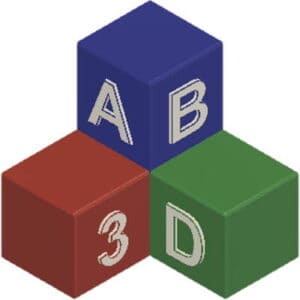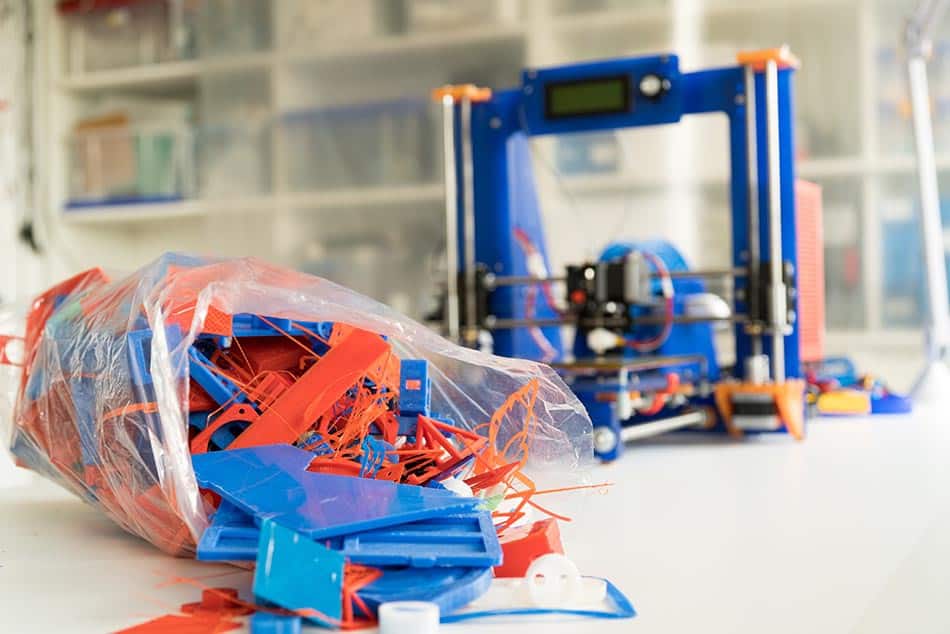This post is also available in:
![]()
Again and again, 3D printing is advertised as being sustainable and environmentally friendly. Here, especially in FDM 3D printing, mainly plastics are used. But plastics and environmental friendliness or sustainability do not necessarily go well together. So is it really true that 3D printing is environmentally friendly?
How environmentally friendly is FDM 3D printing actually? Through 3D printing, private users have the possibility to print spare parts themselves. This increases the service life of the products and thus avoids waste. But on the other hand, it can be used to print all sorts of things quickly and easily. Regardless of their usefulness. This in turn generates waste.
As you can easily see, 3D printing, like so many other things, has its advantages and disadvantages. The use of 3D printers in the private sector offers incredible potential in terms of sustainability. At the same time, you have to be aware of the possible consequences.
Even though I keep talking about 3D printing in general throughout this blog, I try to relate my statements here as best I can to the private user sector and here in particular to FDM 3D printing. Even though there are parallels here and there, there are other factors to be considered on an industrial level that do not play a major role in the private user sector.
In order to evaluate whether 3D printing is environmentally friendly, and if so, how environmentally friendly it is, one must consider various aspects. This includes, among other things, energy consumption, material consumption during production and also the resulting waste.
How high is the energy consumption in FDM 3D printing?
FDM 3D printers for home use consume very little power. The power consumption for a PLA print with a Prusa Mini is about 0.8 kWh, which at an electricity price of € 0.0637/kWh costs less than
€ 0,01/hour corresponds.
This means that 3D printing sometimes consumes far less power than many other household appliances. More information about power consumption and a detailed comparison table to other devices can be found in the article Do 3D printers consume a lot of power?
What is the material consumption for FDM 3D printing?
Material consumption in 3D printing is many times lower than in other manufacturing processes. In 3D printing, in most cases only the material that is really needed is printed. You start to build a component on the empty surface. However, depending on the design or the position of the component on the printing platform, it may be necessary to print support material. This is thrown in the trash after removal.
In CNC milling, on the other hand, the finished component is milled out of a block of material called a blank. Depending on the size of the component, this requires a smaller or larger blank and a corresponding amount of the material remains as waste.
However, as mentioned before, the material consumption also depends on the design of the object. If an object has been deliberately designed for production with the 3D printer, the full potential for material savings can be extracted here. If a part designed for CNC manufacturing is printed with the 3D printer, the savings are still there, but they are rather manageable in size. In this article you will find an overview of the common design rules for 3D printing. Alternatively, you can download the cheat sheet with all the design rules for free.
How much waste is generated by FDM 3D printing?
When it comes to the topic of waste, based on the last section, you would think that 3D printing would produce very little waste. That is also true to a certain extent. Especially if the print object has been designed and optimized for 3D printing, as described above, and ideally requires no or very little support material.
But when I look back at my own projects and print jobs from the last few years, there were only a manageable number of prints that were simply printed and then that was it. Quite the opposite.
Of course, there were many print jobs via e.g. 3dhubs or other platforms where I just printed a design and everything fit. But even here there were sometimes problems. This may be due to problems with the printer, the material, a non-optimal configuration or simply that the print object has become detached from the printing platform. It often took two or three printouts. One of them was usable and that’s what the client got. The rest went into the trash.
I also had the pleasure to work with some product designers or even to accompany a final project of a master course. Not one of these projects was a one shot project. Several runs were always necessary in the course of product development. And here, too, there were occasional misprints, which should not go unmentioned for the sake of completeness.
And then there are the numerous multiple printouts when you start creating your first custom designs. Due to a lack of experience, you make a lot of mistakes in the beginning and overlook a lot of things. Sure, if you’ve studied product design or CAD design, it’s very likely to look a bit different. But especially in 3D printing there are, as it was with me, very many career changers who have little or no idea of the subject initially.
The above-mentioned numerous misproductions or the various prototypes in the course of a product development do not exclusively concern 3D printing. This also happens during milling or injection molding. In these forms of production, due to the production process, much more waste is generated.
Are misprints and filament remnants recyclable?
Generally, filaments are marketed as recyclable, which is basically true. In practice, however, this is very difficult or, strictly speaking, impossible to implement, because it would require the plastics to be collected separately. But that’s exactly what happens almost nowhere. As far as I know, this is most likely to happen in small parts of Asia. However, since in our culture even separating paper and residual waste is too strenuous for some people, this is unlikely to happen here in the next few decades.
So what can you do with the misprints and filament remnants? During the time of the 3D printing hype in the mid-10s, there were first projects to recycle filament remnants. So-called filament extruders. The idea behind it is very simple. One uses a modified form of the 3D printing process. The filament residues are chopped, melted, extruded through a die and wound onto a roll.
These filament extruders still exist today, but these machines usually cost several thousand euros and are therefore unprofitable for private use. The cheapest and thus most suitable machine for private use is available from Filastruder. But also this filament extruder costs incl. all necessary accessories in about €500,-.
Despite the fact that many filament manufacturers and retailers now also offer recycled filament, there is unfortunately virtually no service provider in this area that offers a recycling service. Filabot, one of the manufacturers of filament extruders, offers return boxes for defective prints and filament remnants, but unfortunately only in America. In Europe, I am currently only aware of Recyclingfabrik and Ahrtech. There you can send in filament remnants and misprints and these will either be processed into products or into new filament rolls. But it’s not like you get your own filament for your sent in scraps and waste. You will receive credit for the purchase of a roll of recycled filament depending on the quantity and quality of the material you send in. Now of course this is not the same as getting a filament from your own filament waste, but at least you are getting rid of your filament waste and getting other filament cheaper. And ultimately, it’s also about making a small contribution to environmental protection.
Can 3D printing become even more environmentally friendly or sustainable?
As mentioned at the outset, 3D printing would offer home users the ability to print their own replacement parts, in some cases significantly extending the life of furniture or other items. This is a good start and a first step in the right direction. However, more would be possible if print templates for these spare parts were made available by the industry. But that is exactly what is not happening, because there are completely conflicting interests on the part of the industry. There, the focus is on making as much turnover as possible. There is no interest in this at the moment, and unfortunately there is no need to rethink, as there are no legal requirements to do so either.
However, there are a few who are pioneers here and provide spare parts or even additional items for their products to print themselves. And that too free of charge. One example is Miele with its free print templates for vacuum cleaner attachments. To a limited extent, these companies also include IKEA. There you can also find free print templates for e.g. door handles or other accessories for physically impaired people. Unfortunately, however, IKEA stops here, even though so much more would be possible here in particular.
In short, they do exist. The morally minded or innovative companies. We can only hope that many other companies will take this as an example and join this initiative.
Until then, you can try to find a suitable spare part on various platforms such as thingiverse or myminifactory. Alternatively, you can try to design the part yourself. But not everyone wants to learn a completely new software to design, for example, a mounting bracket for a piece of furniture. Simply commissioning someone to design such a part is possible in principle, but you are very quickly committing copyright infringement and that can be expensive in the worst case.
Conclusion
I think the answer to the question of whether 3D printing is really environmentally friendly is yes. Already, 3D printing is more environmentally friendly than other comparable manufacturing methods. Nevertheless, it has to be said that much more would be possible if the industry were to rethink its approach and give people the opportunity to print spare parts themselves or have them printed by someone else.


